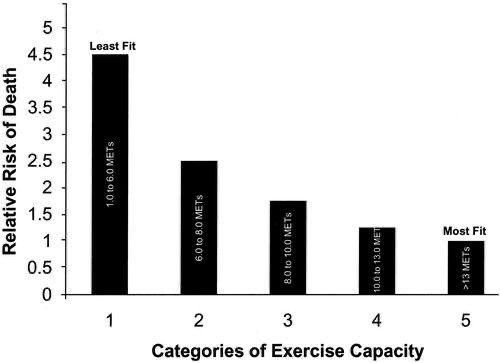
Debunking some common myths about exercise and your heart
1. Sedentary life style is a major risk factor for heart disease and premature death. In the US it is attributed to 250000 deaths a year (I can’t find a similar statistic for India).
2. Along with cardiovascular health, physical activity also improves outcomes in other chronic diseases such as hypertension, diabetes, osteoporosis and colon cancer.
3. Exercise benefits patients in all age groups. Even changing one’s life style in the middle age improves one’s mortality risk.
4. exercise promotes weight reduction and can help reduce blood pressure.
5. Exercise can reduce “bad” cholesterol levels in the blood (the low-density lipoprotein [LDL] level), as well as total cholesterol, and can raise the “good” cholesterol (the high-density lipoprotein level [HDL]).
6. In diabetic patients, regular activity favorably affects the body’s ability to use insulin to control glucose levels in the blood. Although the effect of an exercise program on any single risk factor may generally be small, the effect of continued, moderate exercise on overall cardiovascular risk, when combined with other lifestyle modifications (such as proper nutrition, smoking cessation,and medication use), can be dramatic.
7. There are a number of physiological benefits of exercise; 2 examples are improvements in muscular function and strength and improvement in the body’s ability to take in and use oxygen (maximal oxygen consumption or aerobic capacity). As one’s ability to transport and use oxygen improves, regular daily activities can be performed with less fatigue. This is particularly important for patients with cardiovascular disease, whose exercise capacity is typically lower than that of healthy individuals. There is also evidence that exercise training improves the capacity of the blood vessels to dilate in response to exercise or hormones, consistent with better vascular wall function and an improved ability to provide oxygen to the muscles during exercise. Studies measuring muscular strength and flexibility before and after exercise programs suggest that there are improvements in bone health and ability to perform daily activities, as well as a lower likelihood of developing back pain and of disability, particularly in older age groups.
8. Researchers have found that for heart attack patients who participated in a formal exercise program, the death rate is reduced by 20% to 25%. This is strong evidence in support of physical activity for patients with heart disease.
9. The benefits mentioned above will generally occur by engaging in at least 30 minutes of modest activity on most, preferably all, days of the week. Modest activity is defined as any activity that is similar in intensity to brisk walking at a rate of about 3 to 4 miles per hour. These activities can include any other form of occupational or recreational activity that is dynamic in nature and of similar intensity, such as cycling, yard work, and swimming.
10. The greatest gains in terms of mortality are achieved when an individual goes from being sedentary to becoming moderately active. Studies show that less is gained when an individual goes from being moderately active to very active. I will share a chart depicting this statement separately.
11. Clinical studies have shown that an individual’s fitness level was a more important predictor of death than established risk factors such as smoking, high blood pressure, high cholesterol, and diabetes. These studies underscore the fact that fitness and daily activity levels have a strong influence on the incidence of heart disease and overall mortality.
12. During exercise, there is a transient increase in the risk of having a cardiac-related complication (for example, a heart attack or serious heart rhythm disorder). However, this risk is extremely small. For adults without existing heart disease, the risk of a cardiac event or complication ranges between 1 in 400 000–800 000 hours of exercise. For patients with existing heart disease, an event can occur an average of once in 62 000 hours. Importantly, the risk of a cardiac event is significantly lower among regular exercisers. Evidence suggests that a sedentary person’s risk of a cardiovascular event is nearly 50 times higher than the risk for a person who exercises about 5 times per week. Stated simply, individuals who exercise regularly are much less likely to experience a problem during exercise. Moreover, contrary to popular view, the majority of heart attacks (approximately 90%) occur in the resting state, not during physical activity.
13. Exercise is therefore considered to be extremely safe. Nevertheless, it is a good idea to be aware of the warning signs or symptoms that may indicate a problem: chest discomfort (pain or pressure in the chest, jaw, or neck, possibly radiating into the shoulder, arm, or back), unusual shortness of breath, dizziness or light-headedness, and heart rhythm abnormalities (sensations of heart beat skipping, palpitations, or thumping). If one of these symptoms occurs, medical attention should be sought immediately.

| Activity | METs | Calories/Hr |
|---|---|---|
| Walking (2.0 mph) | 2.5 | 175 |
| Walking (3.0 mph) | 3.5 | 245 |
| Golf (with cart) | 2.5 | 175 |
| Golf (without cart) | 4.9 | 340 |
| Calisthenics (no weights) | 4.0 | 280 |
| Gardening Cycling | 4.4 | 310 |
| (leisurely) Cycling | 4.0 | 2280 |
| (moderately) Swimming | 5.7 | 400 |
| (slowly) Swimming | 4.5 | 315 |
| (fast) Climbing hills | 7.0 | 490 |
| No load | 6.9 | 480 |
| With 5 kg load Tennis | 7.5 | 525 |
| (singles) Tennis | 7.5 | 525 |
| (doubles) Running | 6.0 | 420 |
| (10 min mile) Running | 10.2 | 710 |
| (7.5 min/mile) | 13.2 | 930 |
Dr. Kiran MD (USA) FACC, FACC, FABVM, RPVI (USA)
Interventional cardiology, Endovascular Interventions
Lexington Healthcare, Bangalore


